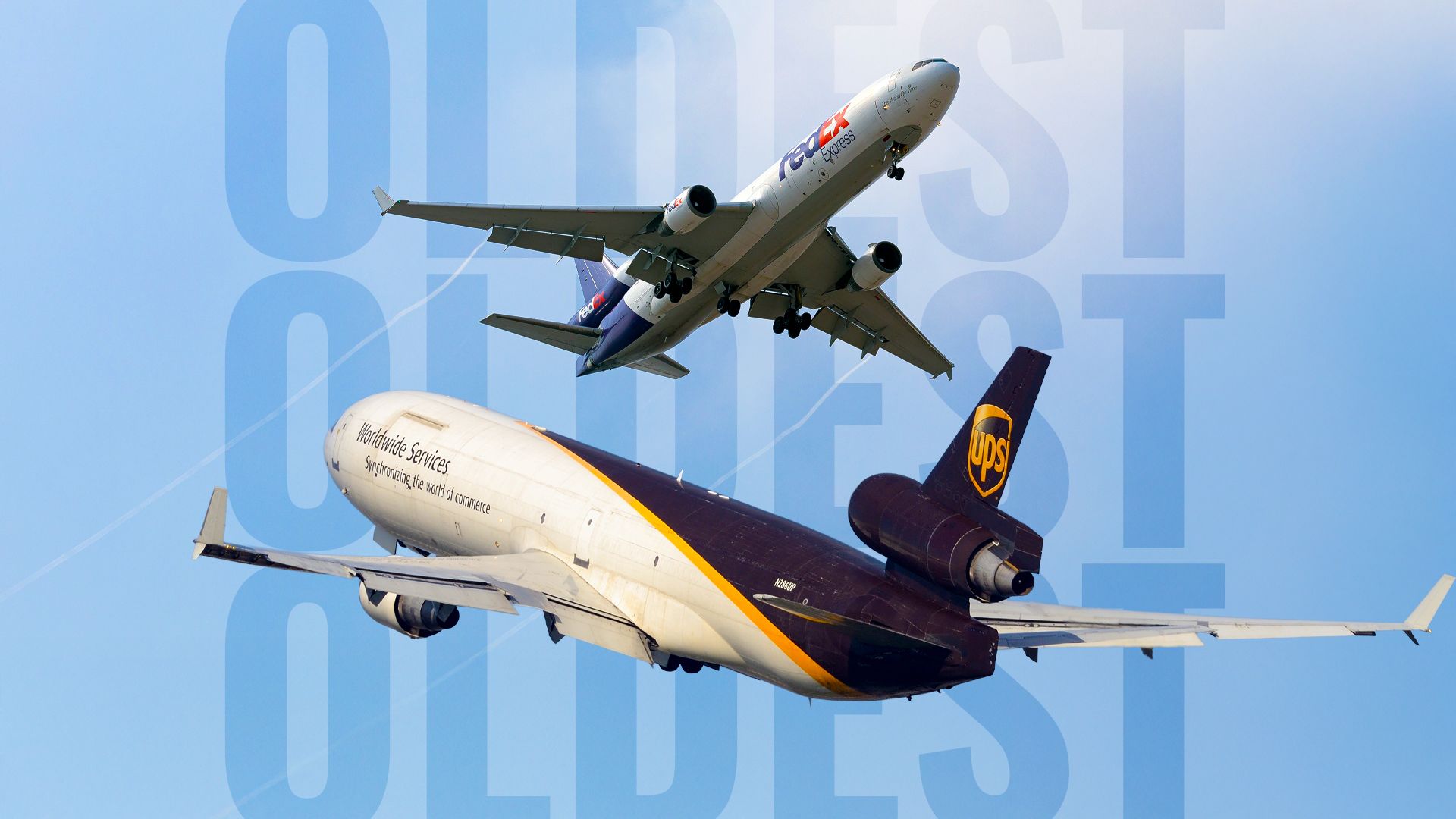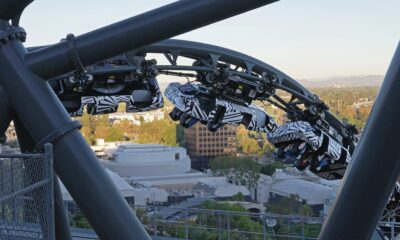World
FedEx and UPS: A Deep Dive into Their Aging Aircraft Fleets

The global commercial aircraft fleet is aging, with an average age now at approximately 14.8 years. This trend has been driven by ongoing supply chain challenges that manufacturers face in meeting delivery schedules. According to the European Union Aviation Safety Agency (EASA), passenger jets are typically retired between 25 and 30 years of service, while freighters can remain operational for 30 to 40 years. This context helps explain why older models, such as the Airbus A300 and McDonnell Douglas MD-11, are still in service with cargo operators like FedEx Express and UPS Airlines.
When it comes to fleet age, UPS Airlines operates the older fleet on average. UPS’s fleet has an average age of 25.3 years, while FedEx Express has an average age of 23 years. Both companies are giants in the air cargo industry, with extensive international networks and hundreds of aircraft in their fleets.
FedEx Express is the largest cargo airline globally by fleet size, operating around 424 aircraft. Its fleet includes a mix of aircraft types such as the Airbus A300-600F and Boeing 777-200F. The oldest active aircraft in its fleet is now the Airbus A300-600R(F), averaging 34.2 years. Meanwhile, UPS Airlines, headquartered in Louisville, Kentucky, has a fleet of 295 aircraft, with its oldest active aircraft being a Boeing 757-200PF, approximately 38.2 years old.
How FedEx Evolved from 14 Aircraft to Hundreds
FedEx began operations in 1973 with just 14 Dassault Falcon 20 aircraft, initially serving 25 US cities. The concept was innovative for its time, integrating air and ground transport under one roof. Following the deregulation of the airline industry in the United States in 1977, FedEx capitalized on the opportunity to acquire larger aircraft, such as the Boeing 727-100, expanding its operations both domestically and internationally.
By the 1980s, the growing demand for freight services led FedEx to adopt widebody aircraft, including the McDonnell Douglas DC-10. This move paved the way for acquiring more than 100 DC-10s, many of which were later converted into MD-10s. In 1989, the acquisition of the Flying Tiger Line significantly expanded FedEx’s international reach and introduced additional long-haul aircraft to its fleet.
Currently, the oldest active aircraft in FedEx’s roster is a Boeing 757-200(F), registered as N935FD. This aircraft is around 42.7 years old and has been a part of the FedEx fleet since 2009. Originally delivered to a British charter carrier, the aircraft has had a long and varied operational history before joining FedEx.
UPS Airlines: From Messenger Service to Global Cargo Leader
UPS Airlines traces its origins back to 1970, when two teenagers started the American Messenger Company in a Seattle basement. The company gradually evolved into United Parcel Service (UPS), and after the airline deregulation act of 1978, UPS launched its own airline, initially shipping freight as belly cargo on other carriers.
By 1988, the airline division had been established to manage an expanding network. UPS began acquiring used Boeing 727s and Douglas DC-8s, which laid the foundation for a dedicated air cargo operation. The fleet has continued to grow, and UPS now flies to more than 800 destinations worldwide.
UPS Airlines’ oldest active aircraft is a Boeing 757-200PF, registered as N402UP. This aircraft is approximately 38.2 years old and has been in continuous service since its delivery to UPS in September 1987. It operates various domestic routes, showcasing the longevity and adaptability of older aircraft.
Both FedEx and UPS continue to operate older aircraft, including models like the Airbus A300-600F and Boeing 757. This reliance on aging fleets stems from several factors. Older aircraft typically have lower acquisition costs, enabling cargo carriers to expand more quickly and maintain profitability. Additionally, cargo planes generally fly less frequently than passenger jets, allowing them to remain airworthy for extended periods.
As the industry evolves, the dynamics of fleet management may shift. While historically reliant on second-hand aircraft, both Airbus and Boeing are now producing dedicated freighter variants, which could lead to a gradual replacement of older models in the coming years.
In conclusion, while UPS operates the older fleet overall, individual aircraft such as FedEx’s Boeing 757-2T7(SF) remain among the oldest still in commercial use. This unique landscape highlights the resilience and adaptability of cargo airlines in navigating the complexities of air transportation.
-

 World2 weeks ago
World2 weeks agoGlobal Air Forces Ranked by Annual Defense Budgets in 2025
-

 World2 weeks ago
World2 weeks agoMass Production of F-35 Fighter Jet Drives Down Costs
-

 Top Stories2 weeks ago
Top Stories2 weeks agoNew ‘Star Trek: Voyager’ Game Demo Released, Players Test Limits
-

 Top Stories2 weeks ago
Top Stories2 weeks agoDirecTV to Launch AI-Driven Ads with User Likenesses in 2026
-

 Science2 weeks ago
Science2 weeks agoTime Crystals Revolutionize Quantum Computing Potential
-

 World2 weeks ago
World2 weeks agoElectrification Challenges Demand Advanced Multiphysics Modeling
-

 Lifestyle2 weeks ago
Lifestyle2 weeks agoLia Thomas Honored with ‘Voice of Inspiration’ Award at Dodgers Event
-

 Entertainment2 weeks ago
Entertainment2 weeks agoFreeport Art Gallery Transforms Waste into Creative Masterpieces
-

 Lifestyle2 weeks ago
Lifestyle2 weeks agoDiscover Reese Witherspoon’s Chic Dining Room Style for Under $25
-

 Health2 weeks ago
Health2 weeks agoGavin Newsom Critiques Trump’s Health and National Guard Plans
-

 Entertainment2 weeks ago
Entertainment2 weeks agoFast & Furious Coaster Hits the Track at Universal Studios
-

 Science2 weeks ago
Science2 weeks agoWaning Crescent Moon: What to Expect on October 17









